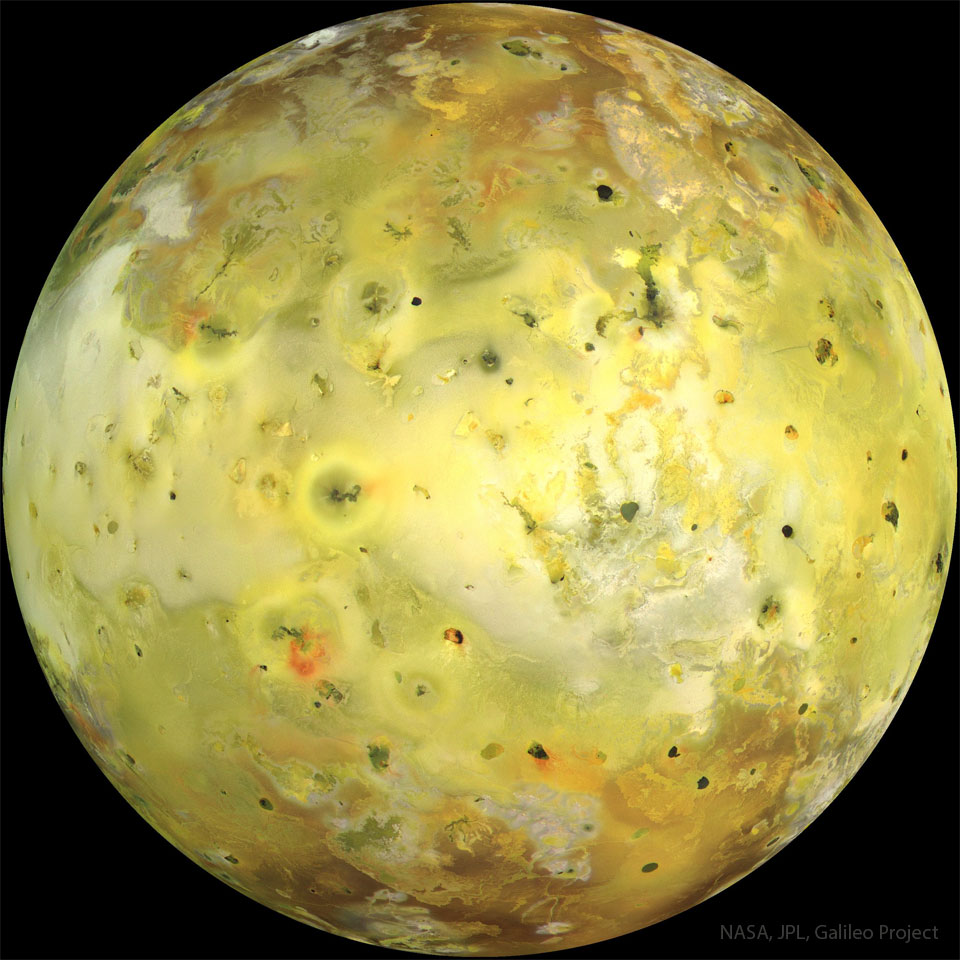Nombre total de pages vues
11/12/2022
BIOMIMETISME - Quand les termites inspirent les architectes
ASTRONOMY - Io in True Color
2022 December 11
Image Credit: NASA, JPL, Galileo Project
Explanation: The strangest moon in the Solar System is bright yellow. The featured picture, an attempt to show how Io would appear in the "true colors" perceptible to the average human eye, was taken in 1999 July by the Galileo spacecraft that orbited Jupiter from 1995 to 2003. Io's colors derive from sulfur and molten silicate rock. The unusual surface of Io is kept very young by its system of active volcanoes. The intense tidal gravity of Jupiter stretches Io and damps wobbles caused by Jupiter's other Galilean moons. The resulting friction greatly heats Io's interior, causing molten rock to explode through the surface. Io's volcanoes are so active that they are effectively turning the whole moon inside out. Some of Io's volcanic lava is so hot it glows in the dark.
10/12/2022
NUCLEAIRE - Visite angoissante au coeur du réacteur n° 5 de Tchernobyl
ASTRONOMY - America and the Sea of Serenity
2022 December 10
Gene Cernan, Apollo 17, NASA; Anaglyph by Patrick Vantuyne
Explanation: Get out your red/blue glasses and check out this stereo view of another world. Fifty years ago the scene was recorded by Apollo 17 mission commander Eugene Cernan on December 11, 1972, one orbit before descending to land on the Moon. The stereo anaglyph was assembled from two photographs (AS17-147-22465, AS17-147-22466) captured from his vantage point on board the Lunar Module Challenger as he and Dr. Harrison Schmitt flew over Apollo 17's landing site in the Taurus-Littrow Valley. The broad, sunlit face of the mountain dubbed South Massif rises near the center of the frame, above the dark floor of Taurus-Littrow to its left. Piloted by Ron Evans, the Command Module America is visible in orbit in the foreground against the South Massif's peak. Beyond the mountains, toward the lunar limb, lies the Moon's Mare Serenitatis.
09/12/2022
ASTRONOMY - Mars Rises above the Lunar Limb
2022 December 9
Image Credit & Copyright: Tom Glenn
Explanation: On the night of December 7 Mars wandered near the Full Moon. In fact the Red Planet was occulted, passing behind the Moon, when viewed from locations across Europe and North America. About an hour after disappearing behind the lunar disk Mars reappears in this stack of sharp video frames captured from San Diego, planet Earth. With the Moon in the foreground Mars was a mere 82 million kilometers distant, near its own opposition. Full Moon and full Mars were bright enough provide the spectacular image with no exposure adjustments necessary. In the image Mars appears to rise just over ancient, dark-floored, lunar crater Abel very close to the southeastern edge of the Moon's near side. Humboldt is the large impact crater to its north (left).
08/12/2022
BIOMIMETISME - Des robots spatiaux équipés de patte de gecko
ASTRONOMY - Orion and the Ocean of Storms
2022 December 8
Image Credit: NASA, Artemis 1
Explanation: A camera on board the uncrewed Orion spacecraft captured this view on December 5 as Orion approached its return powered flyby of the Moon. Below one of Orion's extended solar arrays lies dark, smooth, terrain along the western edge of the Oceanus Procellarum. Prominent on the lunar nearside Oceanus Procellarum, the Ocean of Storms, is the largest of the Moon's lava-flooded maria. The lunar terminator, shadow line between lunar night and day, runs along the left of the frame. The 41 kilometer diameter crater Marius is top center, with ray crater Kepler peeking in at the edge, just right of the solar array wing. Kepler's bright rays extend to the north and west, reaching the dark-floored Marius. Of course the Orion spacecraft is now headed toward a December 11 splashdown in planet Earth's water-flooded Pacific Ocean.
ASTRONOMIE - Mars - 08-12-2022
06/12/2022
MICROPHOTOGRAPHIE - Marek Miś - Un mélange à base d'acide citrique un peu raide
LES BELLES INVENTIONS DE LEONARD DE VINCI - La grue à plateforme annulaire
Voici un exemple d'une des machines de levage conçues par l'ingénieur Léonard de Vinci . Il s'agit d'une grue à plateforme a...

-
2022 September 26 All the Water on Planet Earth Illustration Credit: Jack Cook, Adam Nieman, Woods Hole Oceanographic Institution ; Data ...
-
2025 May 11 The Surface of Venus from Venera 14 Image Credit: Soviet Planetary Exploration Program , Venera 14 ; Processing & Copyri...






